Analysis of Architecture and System Integration: A Detailed Report
VerifiedAdded on 2021/06/17
|13
|2588
|222
Report
AI Summary
This report provides a detailed analysis of architecture and system integration. It begins with an introduction to integration systems and their increasing importance in heterogeneous environments. The report then delves into application and service integration, discussing legacy systems, web services, and various integration types. It explores the design of computing and storage infrastructure, including cloud storage and its benefits. The report also touches upon information integration, highlighting the challenges and solutions in managing and integrating data from diverse sources, including the use of demo data integration and code examples. Finally, it concludes by summarizing the key aspects of system integration and the evolution of IT infrastructure.
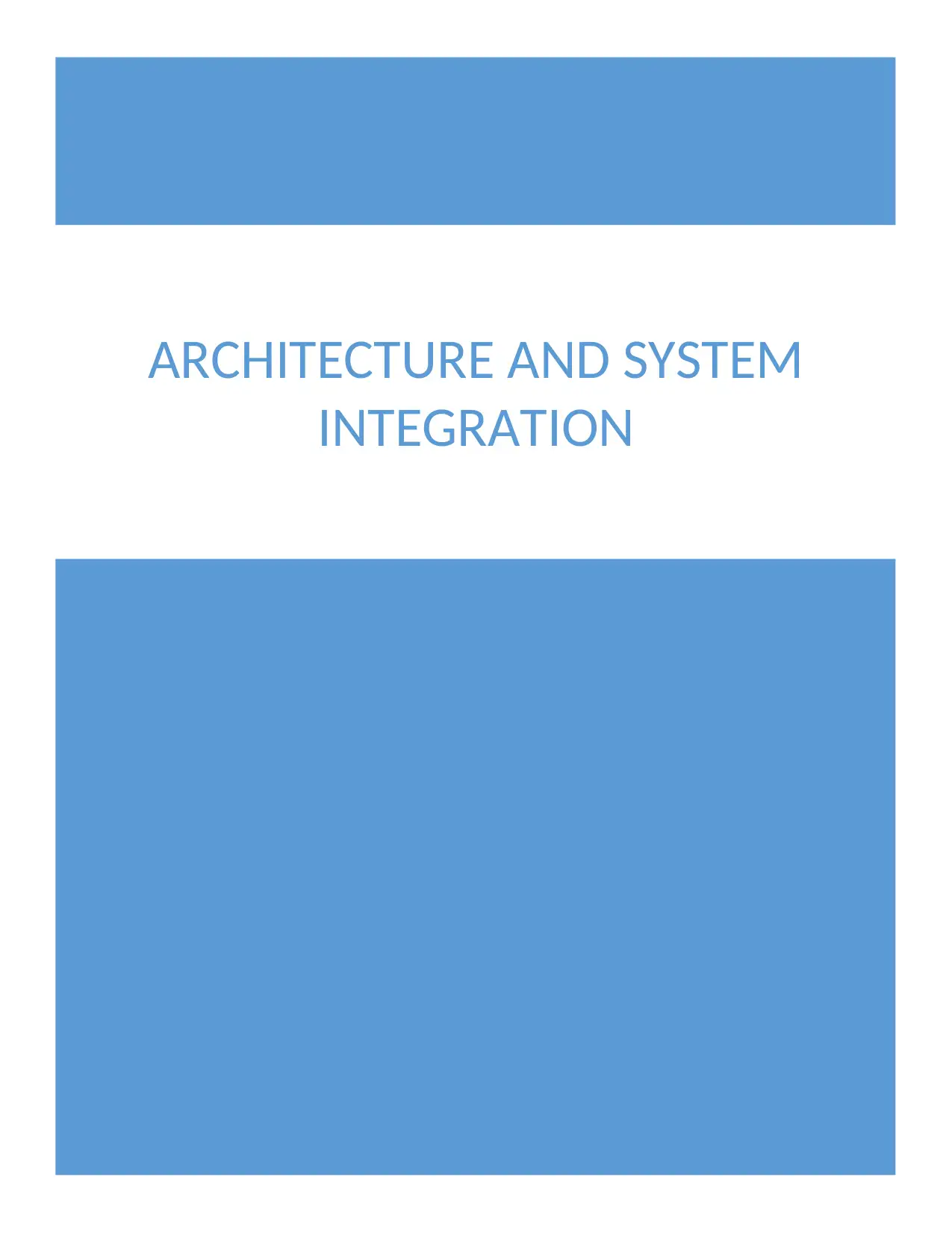
ARCHITECTURE AND SYSTEM
INTEGRATION
INTEGRATION
Paraphrase This Document
Need a fresh take? Get an instant paraphrase of this document with our AI Paraphraser
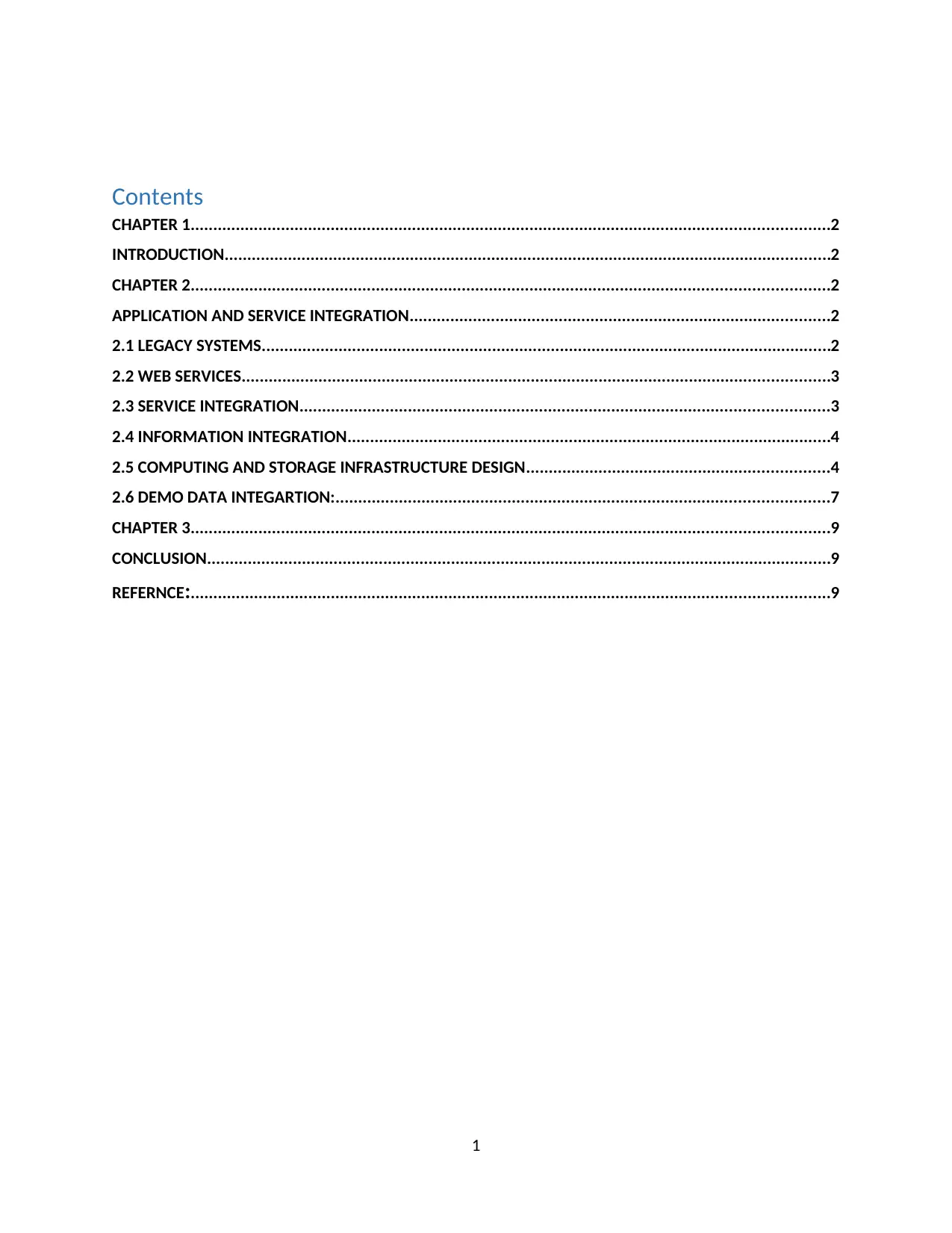
Contents
CHAPTER 1.............................................................................................................................................2
INTRODUCTION......................................................................................................................................2
CHAPTER 2.............................................................................................................................................2
APPLICATION AND SERVICE INTEGRATION.............................................................................................2
2.1 LEGACY SYSTEMS..............................................................................................................................2
2.2 WEB SERVICES..................................................................................................................................3
2.3 SERVICE INTEGRATION.....................................................................................................................3
2.4 INFORMATION INTEGRATION...........................................................................................................4
2.5 COMPUTING AND STORAGE INFRASTRUCTURE DESIGN...................................................................4
2.6 DEMO DATA INTEGARTION:.............................................................................................................7
CHAPTER 3.............................................................................................................................................9
CONCLUSION..........................................................................................................................................9
REFERNCE:.............................................................................................................................................9
1
CHAPTER 1.............................................................................................................................................2
INTRODUCTION......................................................................................................................................2
CHAPTER 2.............................................................................................................................................2
APPLICATION AND SERVICE INTEGRATION.............................................................................................2
2.1 LEGACY SYSTEMS..............................................................................................................................2
2.2 WEB SERVICES..................................................................................................................................3
2.3 SERVICE INTEGRATION.....................................................................................................................3
2.4 INFORMATION INTEGRATION...........................................................................................................4
2.5 COMPUTING AND STORAGE INFRASTRUCTURE DESIGN...................................................................4
2.6 DEMO DATA INTEGARTION:.............................................................................................................7
CHAPTER 3.............................................................................................................................................9
CONCLUSION..........................................................................................................................................9
REFERNCE:.............................................................................................................................................9
1
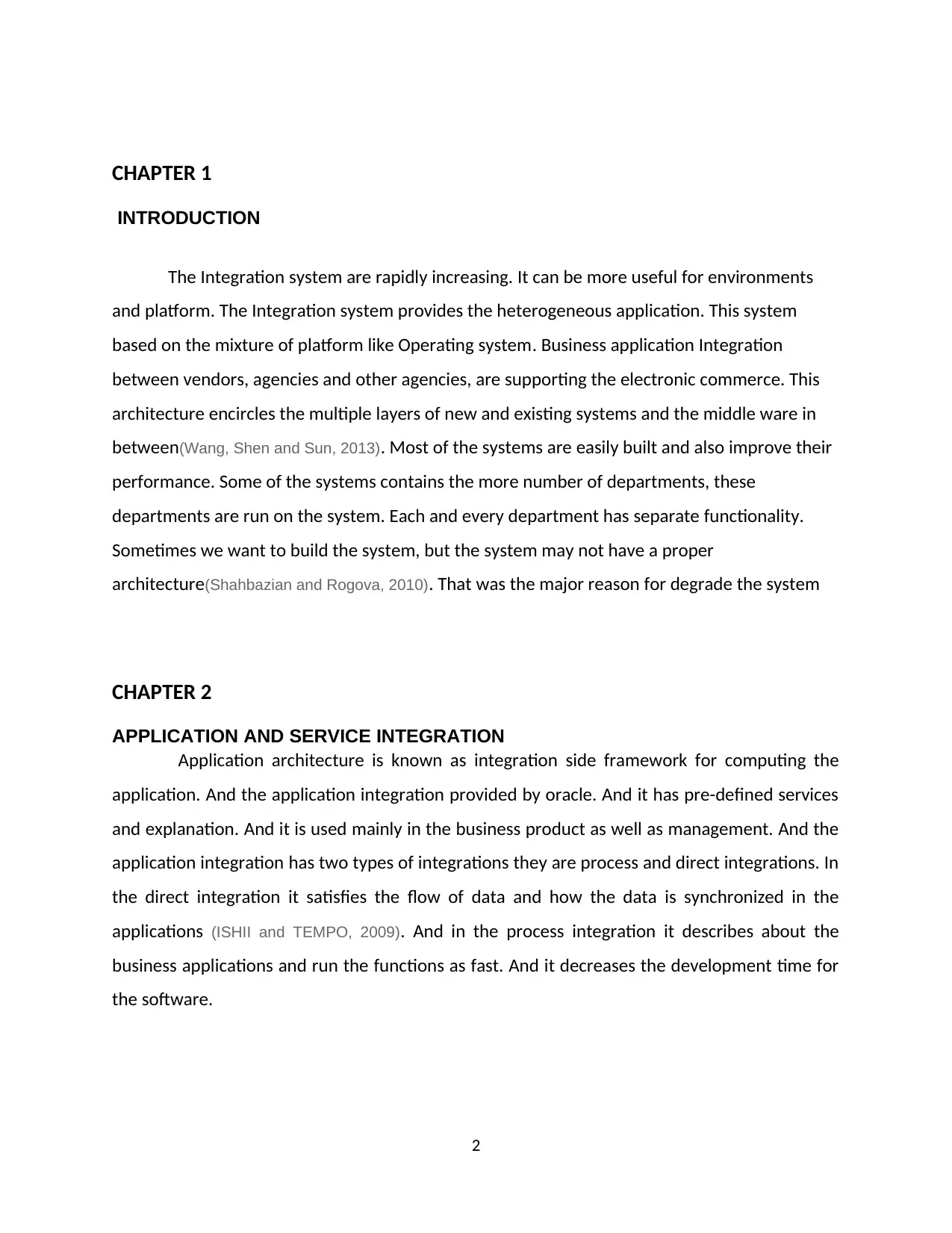
CHAPTER 1
INTRODUCTION
The Integration system are rapidly increasing. It can be more useful for environments
and platform. The Integration system provides the heterogeneous application. This system
based on the mixture of platform like Operating system. Business application Integration
between vendors, agencies and other agencies, are supporting the electronic commerce. This
architecture encircles the multiple layers of new and existing systems and the middle ware in
between(Wang, Shen and Sun, 2013). Most of the systems are easily built and also improve their
performance. Some of the systems contains the more number of departments, these
departments are run on the system. Each and every department has separate functionality.
Sometimes we want to build the system, but the system may not have a proper
architecture(Shahbazian and Rogova, 2010). That was the major reason for degrade the system
CHAPTER 2
APPLICATION AND SERVICE INTEGRATION
Application architecture is known as integration side framework for computing the
application. And the application integration provided by oracle. And it has pre-defined services
and explanation. And it is used mainly in the business product as well as management. And the
application integration has two types of integrations they are process and direct integrations. In
the direct integration it satisfies the flow of data and how the data is synchronized in the
applications (ISHII and TEMPO, 2009). And in the process integration it describes about the
business applications and run the functions as fast. And it decreases the development time for
the software.
2
INTRODUCTION
The Integration system are rapidly increasing. It can be more useful for environments
and platform. The Integration system provides the heterogeneous application. This system
based on the mixture of platform like Operating system. Business application Integration
between vendors, agencies and other agencies, are supporting the electronic commerce. This
architecture encircles the multiple layers of new and existing systems and the middle ware in
between(Wang, Shen and Sun, 2013). Most of the systems are easily built and also improve their
performance. Some of the systems contains the more number of departments, these
departments are run on the system. Each and every department has separate functionality.
Sometimes we want to build the system, but the system may not have a proper
architecture(Shahbazian and Rogova, 2010). That was the major reason for degrade the system
CHAPTER 2
APPLICATION AND SERVICE INTEGRATION
Application architecture is known as integration side framework for computing the
application. And the application integration provided by oracle. And it has pre-defined services
and explanation. And it is used mainly in the business product as well as management. And the
application integration has two types of integrations they are process and direct integrations. In
the direct integration it satisfies the flow of data and how the data is synchronized in the
applications (ISHII and TEMPO, 2009). And in the process integration it describes about the
business applications and run the functions as fast. And it decreases the development time for
the software.
2
⊘ This is a preview!⊘
Do you want full access?
Subscribe today to unlock all pages.

Trusted by 1+ million students worldwide
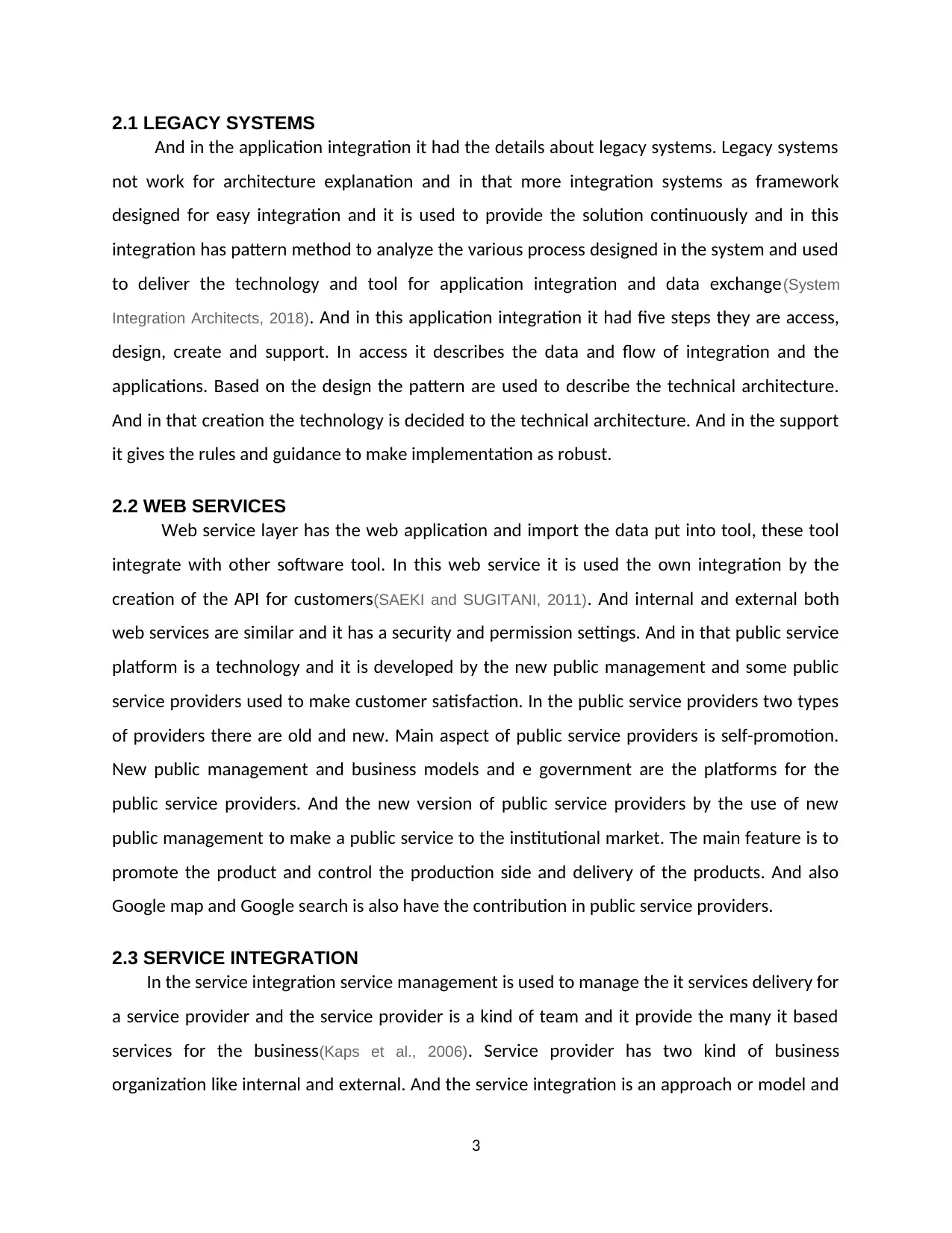
2.1 LEGACY SYSTEMS
And in the application integration it had the details about legacy systems. Legacy systems
not work for architecture explanation and in that more integration systems as framework
designed for easy integration and it is used to provide the solution continuously and in this
integration has pattern method to analyze the various process designed in the system and used
to deliver the technology and tool for application integration and data exchange(System
Integration Architects, 2018). And in this application integration it had five steps they are access,
design, create and support. In access it describes the data and flow of integration and the
applications. Based on the design the pattern are used to describe the technical architecture.
And in that creation the technology is decided to the technical architecture. And in the support
it gives the rules and guidance to make implementation as robust.
2.2 WEB SERVICES
Web service layer has the web application and import the data put into tool, these tool
integrate with other software tool. In this web service it is used the own integration by the
creation of the API for customers(SAEKI and SUGITANI, 2011). And internal and external both
web services are similar and it has a security and permission settings. And in that public service
platform is a technology and it is developed by the new public management and some public
service providers used to make customer satisfaction. In the public service providers two types
of providers there are old and new. Main aspect of public service providers is self-promotion.
New public management and business models and e government are the platforms for the
public service providers. And the new version of public service providers by the use of new
public management to make a public service to the institutional market. The main feature is to
promote the product and control the production side and delivery of the products. And also
Google map and Google search is also have the contribution in public service providers.
2.3 SERVICE INTEGRATION
In the service integration service management is used to manage the it services delivery for
a service provider and the service provider is a kind of team and it provide the many it based
services for the business(Kaps et al., 2006). Service provider has two kind of business
organization like internal and external. And the service integration is an approach or model and
3
And in the application integration it had the details about legacy systems. Legacy systems
not work for architecture explanation and in that more integration systems as framework
designed for easy integration and it is used to provide the solution continuously and in this
integration has pattern method to analyze the various process designed in the system and used
to deliver the technology and tool for application integration and data exchange(System
Integration Architects, 2018). And in this application integration it had five steps they are access,
design, create and support. In access it describes the data and flow of integration and the
applications. Based on the design the pattern are used to describe the technical architecture.
And in that creation the technology is decided to the technical architecture. And in the support
it gives the rules and guidance to make implementation as robust.
2.2 WEB SERVICES
Web service layer has the web application and import the data put into tool, these tool
integrate with other software tool. In this web service it is used the own integration by the
creation of the API for customers(SAEKI and SUGITANI, 2011). And internal and external both
web services are similar and it has a security and permission settings. And in that public service
platform is a technology and it is developed by the new public management and some public
service providers used to make customer satisfaction. In the public service providers two types
of providers there are old and new. Main aspect of public service providers is self-promotion.
New public management and business models and e government are the platforms for the
public service providers. And the new version of public service providers by the use of new
public management to make a public service to the institutional market. The main feature is to
promote the product and control the production side and delivery of the products. And also
Google map and Google search is also have the contribution in public service providers.
2.3 SERVICE INTEGRATION
In the service integration service management is used to manage the it services delivery for
a service provider and the service provider is a kind of team and it provide the many it based
services for the business(Kaps et al., 2006). Service provider has two kind of business
organization like internal and external. And the service integration is an approach or model and
3
Paraphrase This Document
Need a fresh take? Get an instant paraphrase of this document with our AI Paraphraser
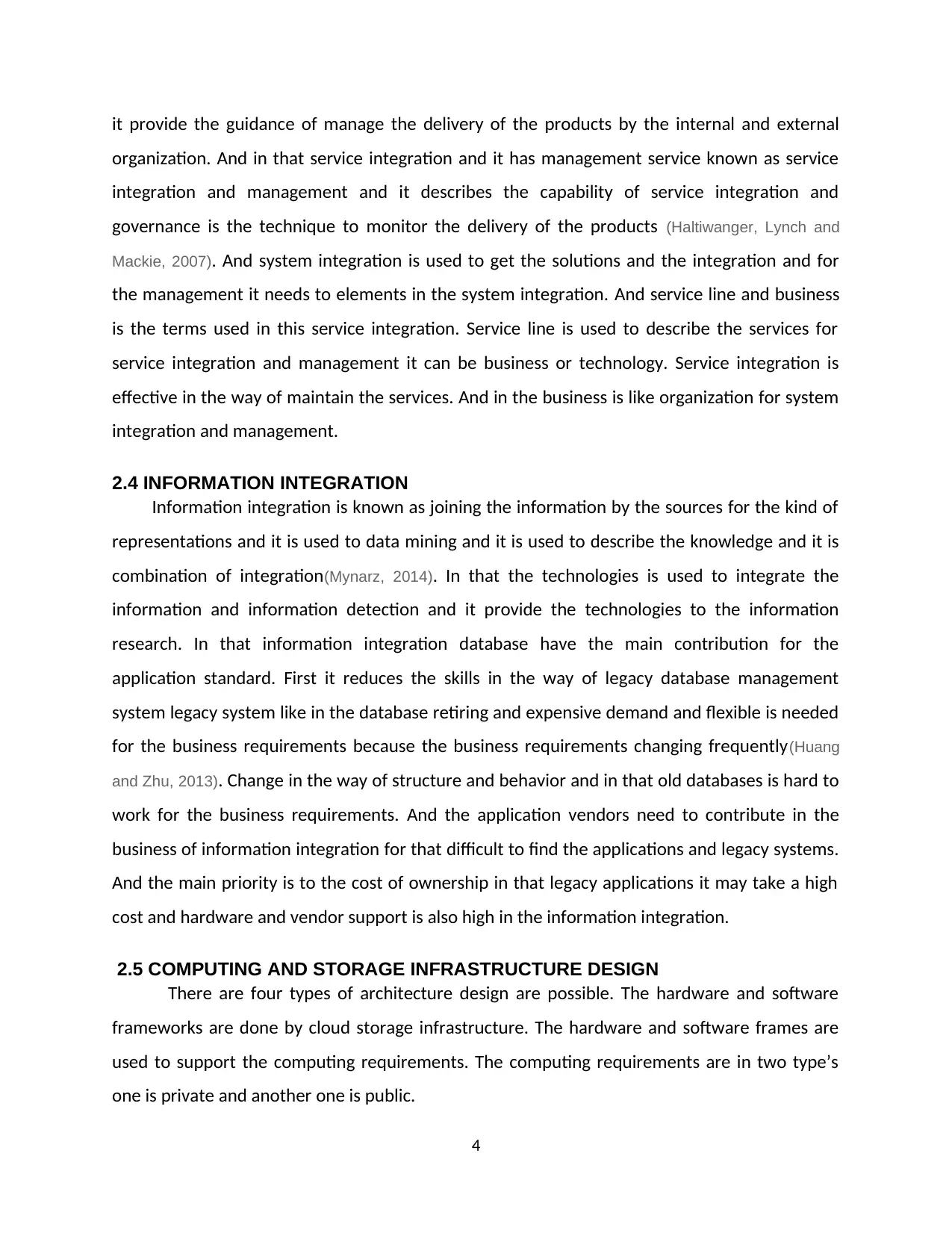
it provide the guidance of manage the delivery of the products by the internal and external
organization. And in that service integration and it has management service known as service
integration and management and it describes the capability of service integration and
governance is the technique to monitor the delivery of the products (Haltiwanger, Lynch and
Mackie, 2007). And system integration is used to get the solutions and the integration and for
the management it needs to elements in the system integration. And service line and business
is the terms used in this service integration. Service line is used to describe the services for
service integration and management it can be business or technology. Service integration is
effective in the way of maintain the services. And in the business is like organization for system
integration and management.
2.4 INFORMATION INTEGRATION
Information integration is known as joining the information by the sources for the kind of
representations and it is used to data mining and it is used to describe the knowledge and it is
combination of integration(Mynarz, 2014). In that the technologies is used to integrate the
information and information detection and it provide the technologies to the information
research. In that information integration database have the main contribution for the
application standard. First it reduces the skills in the way of legacy database management
system legacy system like in the database retiring and expensive demand and flexible is needed
for the business requirements because the business requirements changing frequently(Huang
and Zhu, 2013). Change in the way of structure and behavior and in that old databases is hard to
work for the business requirements. And the application vendors need to contribute in the
business of information integration for that difficult to find the applications and legacy systems.
And the main priority is to the cost of ownership in that legacy applications it may take a high
cost and hardware and vendor support is also high in the information integration.
2.5 COMPUTING AND STORAGE INFRASTRUCTURE DESIGN
There are four types of architecture design are possible. The hardware and software
frameworks are done by cloud storage infrastructure. The hardware and software frames are
used to support the computing requirements. The computing requirements are in two type’s
one is private and another one is public.
4
organization. And in that service integration and it has management service known as service
integration and management and it describes the capability of service integration and
governance is the technique to monitor the delivery of the products (Haltiwanger, Lynch and
Mackie, 2007). And system integration is used to get the solutions and the integration and for
the management it needs to elements in the system integration. And service line and business
is the terms used in this service integration. Service line is used to describe the services for
service integration and management it can be business or technology. Service integration is
effective in the way of maintain the services. And in the business is like organization for system
integration and management.
2.4 INFORMATION INTEGRATION
Information integration is known as joining the information by the sources for the kind of
representations and it is used to data mining and it is used to describe the knowledge and it is
combination of integration(Mynarz, 2014). In that the technologies is used to integrate the
information and information detection and it provide the technologies to the information
research. In that information integration database have the main contribution for the
application standard. First it reduces the skills in the way of legacy database management
system legacy system like in the database retiring and expensive demand and flexible is needed
for the business requirements because the business requirements changing frequently(Huang
and Zhu, 2013). Change in the way of structure and behavior and in that old databases is hard to
work for the business requirements. And the application vendors need to contribute in the
business of information integration for that difficult to find the applications and legacy systems.
And the main priority is to the cost of ownership in that legacy applications it may take a high
cost and hardware and vendor support is also high in the information integration.
2.5 COMPUTING AND STORAGE INFRASTRUCTURE DESIGN
There are four types of architecture design are possible. The hardware and software
frameworks are done by cloud storage infrastructure. The hardware and software frames are
used to support the computing requirements. The computing requirements are in two type’s
one is private and another one is public.
4
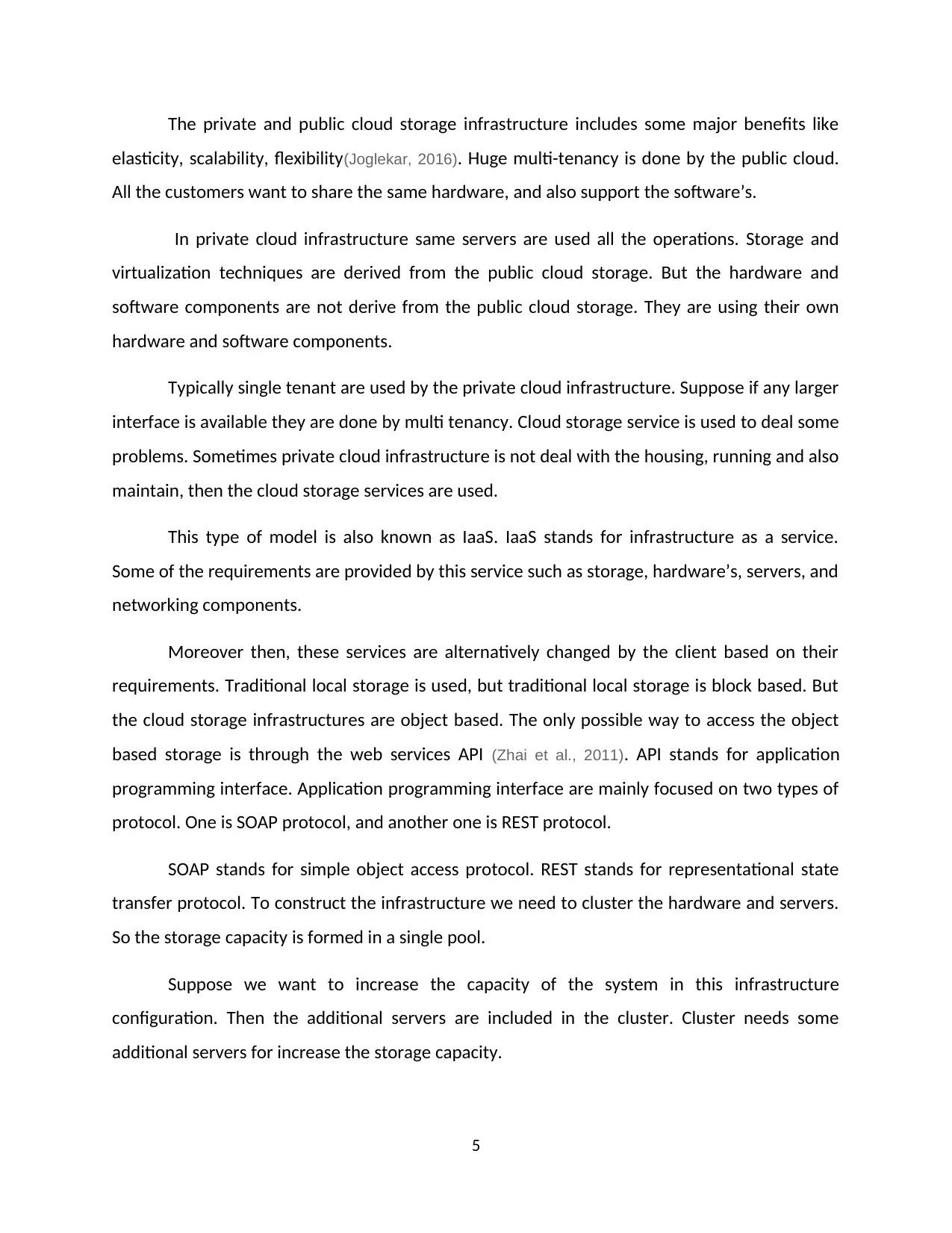
The private and public cloud storage infrastructure includes some major benefits like
elasticity, scalability, flexibility(Joglekar, 2016). Huge multi-tenancy is done by the public cloud.
All the customers want to share the same hardware, and also support the software’s.
In private cloud infrastructure same servers are used all the operations. Storage and
virtualization techniques are derived from the public cloud storage. But the hardware and
software components are not derive from the public cloud storage. They are using their own
hardware and software components.
Typically single tenant are used by the private cloud infrastructure. Suppose if any larger
interface is available they are done by multi tenancy. Cloud storage service is used to deal some
problems. Sometimes private cloud infrastructure is not deal with the housing, running and also
maintain, then the cloud storage services are used.
This type of model is also known as IaaS. IaaS stands for infrastructure as a service.
Some of the requirements are provided by this service such as storage, hardware’s, servers, and
networking components.
Moreover then, these services are alternatively changed by the client based on their
requirements. Traditional local storage is used, but traditional local storage is block based. But
the cloud storage infrastructures are object based. The only possible way to access the object
based storage is through the web services API (Zhai et al., 2011). API stands for application
programming interface. Application programming interface are mainly focused on two types of
protocol. One is SOAP protocol, and another one is REST protocol.
SOAP stands for simple object access protocol. REST stands for representational state
transfer protocol. To construct the infrastructure we need to cluster the hardware and servers.
So the storage capacity is formed in a single pool.
Suppose we want to increase the capacity of the system in this infrastructure
configuration. Then the additional servers are included in the cluster. Cluster needs some
additional servers for increase the storage capacity.
5
elasticity, scalability, flexibility(Joglekar, 2016). Huge multi-tenancy is done by the public cloud.
All the customers want to share the same hardware, and also support the software’s.
In private cloud infrastructure same servers are used all the operations. Storage and
virtualization techniques are derived from the public cloud storage. But the hardware and
software components are not derive from the public cloud storage. They are using their own
hardware and software components.
Typically single tenant are used by the private cloud infrastructure. Suppose if any larger
interface is available they are done by multi tenancy. Cloud storage service is used to deal some
problems. Sometimes private cloud infrastructure is not deal with the housing, running and also
maintain, then the cloud storage services are used.
This type of model is also known as IaaS. IaaS stands for infrastructure as a service.
Some of the requirements are provided by this service such as storage, hardware’s, servers, and
networking components.
Moreover then, these services are alternatively changed by the client based on their
requirements. Traditional local storage is used, but traditional local storage is block based. But
the cloud storage infrastructures are object based. The only possible way to access the object
based storage is through the web services API (Zhai et al., 2011). API stands for application
programming interface. Application programming interface are mainly focused on two types of
protocol. One is SOAP protocol, and another one is REST protocol.
SOAP stands for simple object access protocol. REST stands for representational state
transfer protocol. To construct the infrastructure we need to cluster the hardware and servers.
So the storage capacity is formed in a single pool.
Suppose we want to increase the capacity of the system in this infrastructure
configuration. Then the additional servers are included in the cluster. Cluster needs some
additional servers for increase the storage capacity.
5
⊘ This is a preview!⊘
Do you want full access?
Subscribe today to unlock all pages.

Trusted by 1+ million students worldwide
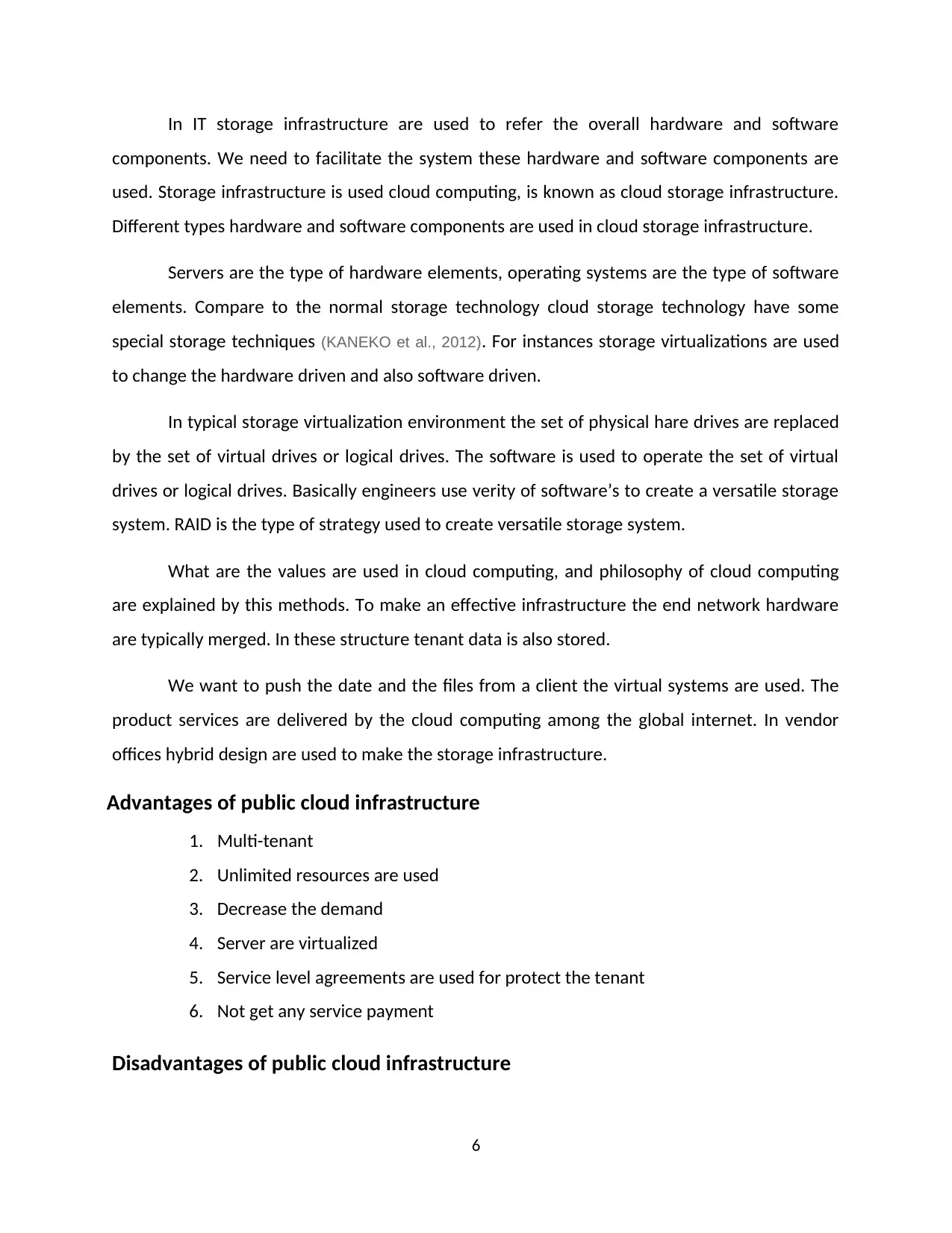
In IT storage infrastructure are used to refer the overall hardware and software
components. We need to facilitate the system these hardware and software components are
used. Storage infrastructure is used cloud computing, is known as cloud storage infrastructure.
Different types hardware and software components are used in cloud storage infrastructure.
Servers are the type of hardware elements, operating systems are the type of software
elements. Compare to the normal storage technology cloud storage technology have some
special storage techniques (KANEKO et al., 2012). For instances storage virtualizations are used
to change the hardware driven and also software driven.
In typical storage virtualization environment the set of physical hare drives are replaced
by the set of virtual drives or logical drives. The software is used to operate the set of virtual
drives or logical drives. Basically engineers use verity of software’s to create a versatile storage
system. RAID is the type of strategy used to create versatile storage system.
What are the values are used in cloud computing, and philosophy of cloud computing
are explained by this methods. To make an effective infrastructure the end network hardware
are typically merged. In these structure tenant data is also stored.
We want to push the date and the files from a client the virtual systems are used. The
product services are delivered by the cloud computing among the global internet. In vendor
offices hybrid design are used to make the storage infrastructure.
Advantages of public cloud infrastructure
1. Multi-tenant
2. Unlimited resources are used
3. Decrease the demand
4. Server are virtualized
5. Service level agreements are used for protect the tenant
6. Not get any service payment
Disadvantages of public cloud infrastructure
6
components. We need to facilitate the system these hardware and software components are
used. Storage infrastructure is used cloud computing, is known as cloud storage infrastructure.
Different types hardware and software components are used in cloud storage infrastructure.
Servers are the type of hardware elements, operating systems are the type of software
elements. Compare to the normal storage technology cloud storage technology have some
special storage techniques (KANEKO et al., 2012). For instances storage virtualizations are used
to change the hardware driven and also software driven.
In typical storage virtualization environment the set of physical hare drives are replaced
by the set of virtual drives or logical drives. The software is used to operate the set of virtual
drives or logical drives. Basically engineers use verity of software’s to create a versatile storage
system. RAID is the type of strategy used to create versatile storage system.
What are the values are used in cloud computing, and philosophy of cloud computing
are explained by this methods. To make an effective infrastructure the end network hardware
are typically merged. In these structure tenant data is also stored.
We want to push the date and the files from a client the virtual systems are used. The
product services are delivered by the cloud computing among the global internet. In vendor
offices hybrid design are used to make the storage infrastructure.
Advantages of public cloud infrastructure
1. Multi-tenant
2. Unlimited resources are used
3. Decrease the demand
4. Server are virtualized
5. Service level agreements are used for protect the tenant
6. Not get any service payment
Disadvantages of public cloud infrastructure
6
Paraphrase This Document
Need a fresh take? Get an instant paraphrase of this document with our AI Paraphraser
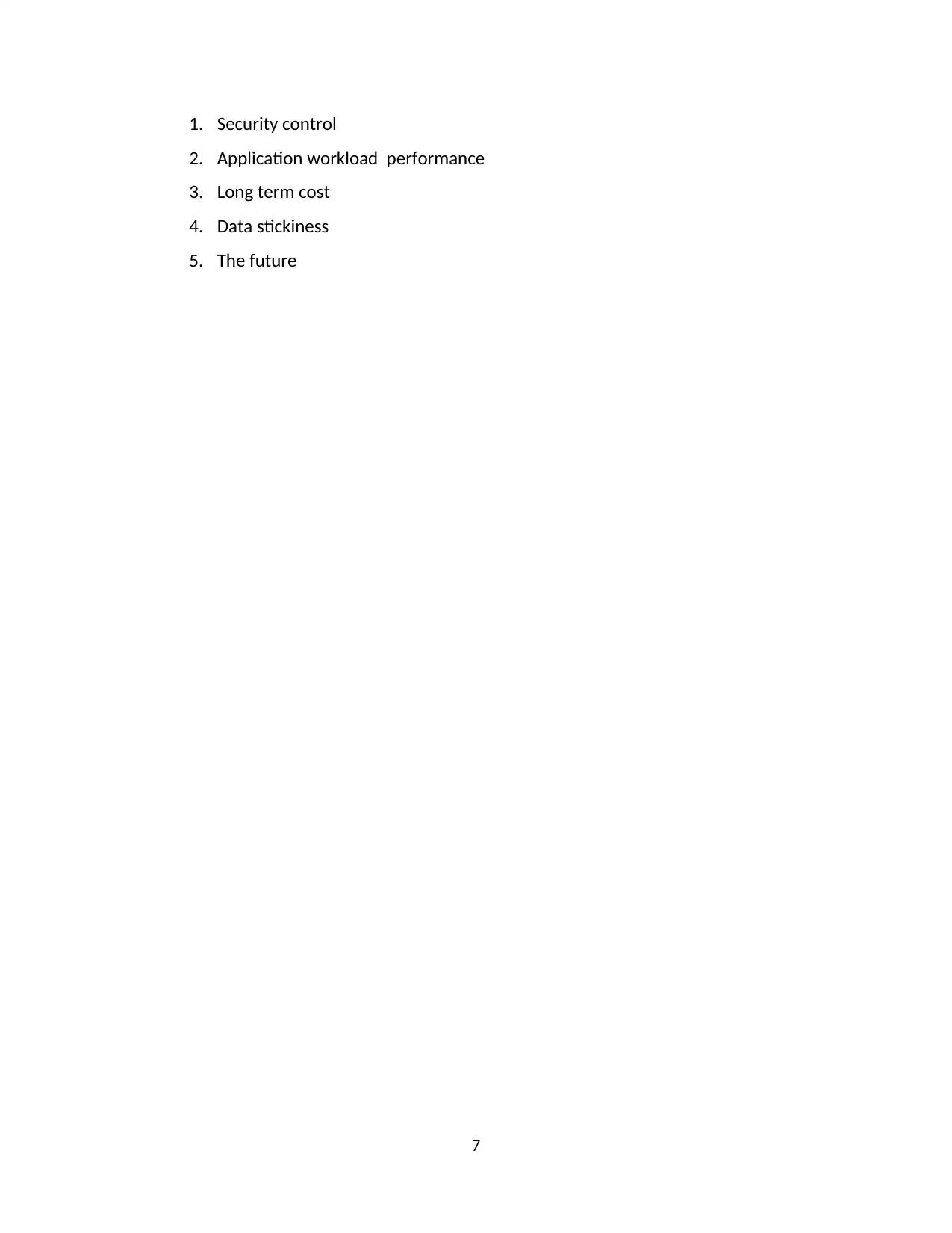
1. Security control
2. Application workload performance
3. Long term cost
4. Data stickiness
5. The future
7
2. Application workload performance
3. Long term cost
4. Data stickiness
5. The future
7
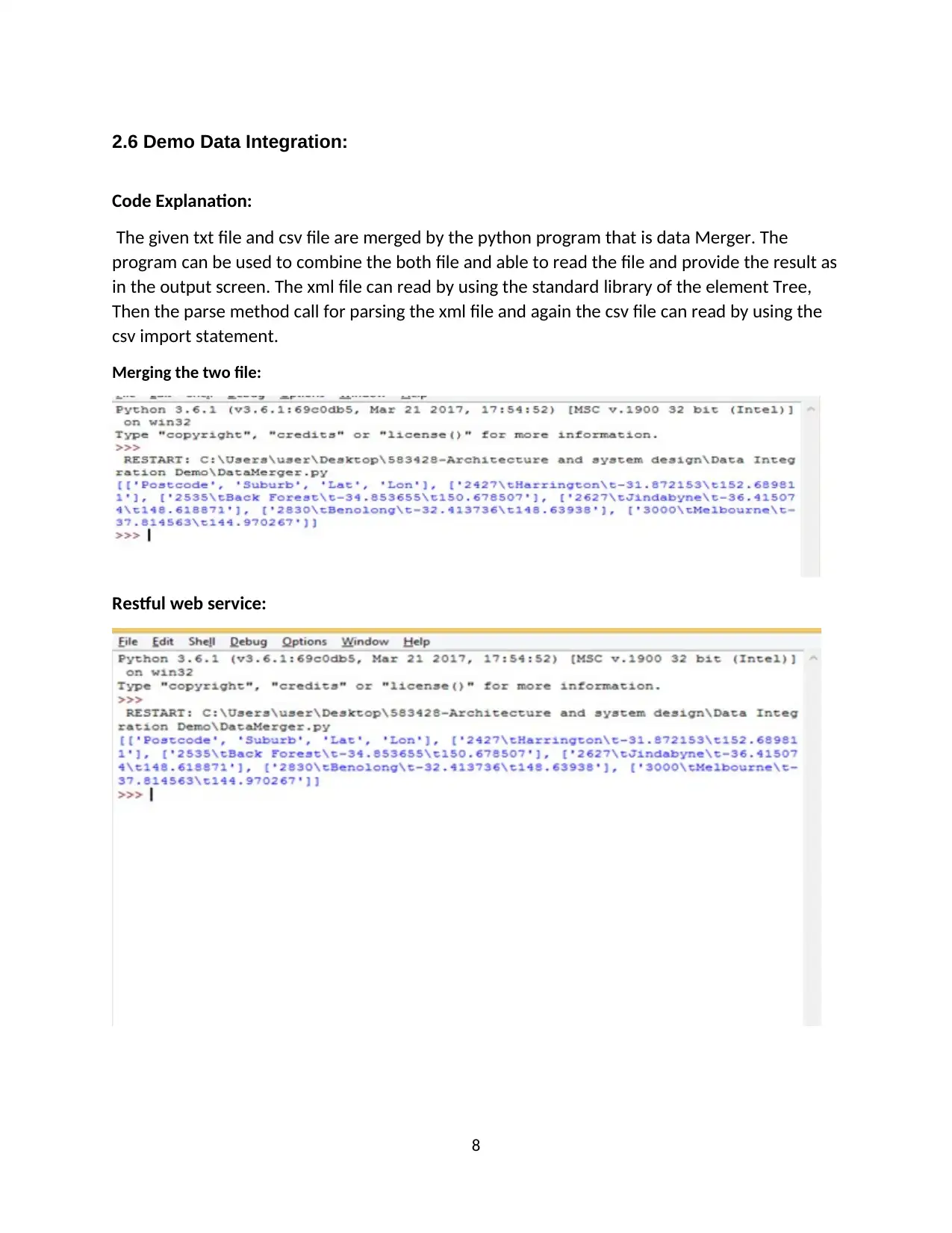
2.6 Demo Data Integration:
Code Explanation:
The given txt file and csv file are merged by the python program that is data Merger. The
program can be used to combine the both file and able to read the file and provide the result as
in the output screen. The xml file can read by using the standard library of the element Tree,
Then the parse method call for parsing the xml file and again the csv file can read by using the
csv import statement.
Merging the two file:
Restful web service:
8
Code Explanation:
The given txt file and csv file are merged by the python program that is data Merger. The
program can be used to combine the both file and able to read the file and provide the result as
in the output screen. The xml file can read by using the standard library of the element Tree,
Then the parse method call for parsing the xml file and again the csv file can read by using the
csv import statement.
Merging the two file:
Restful web service:
8
⊘ This is a preview!⊘
Do you want full access?
Subscribe today to unlock all pages.

Trusted by 1+ million students worldwide
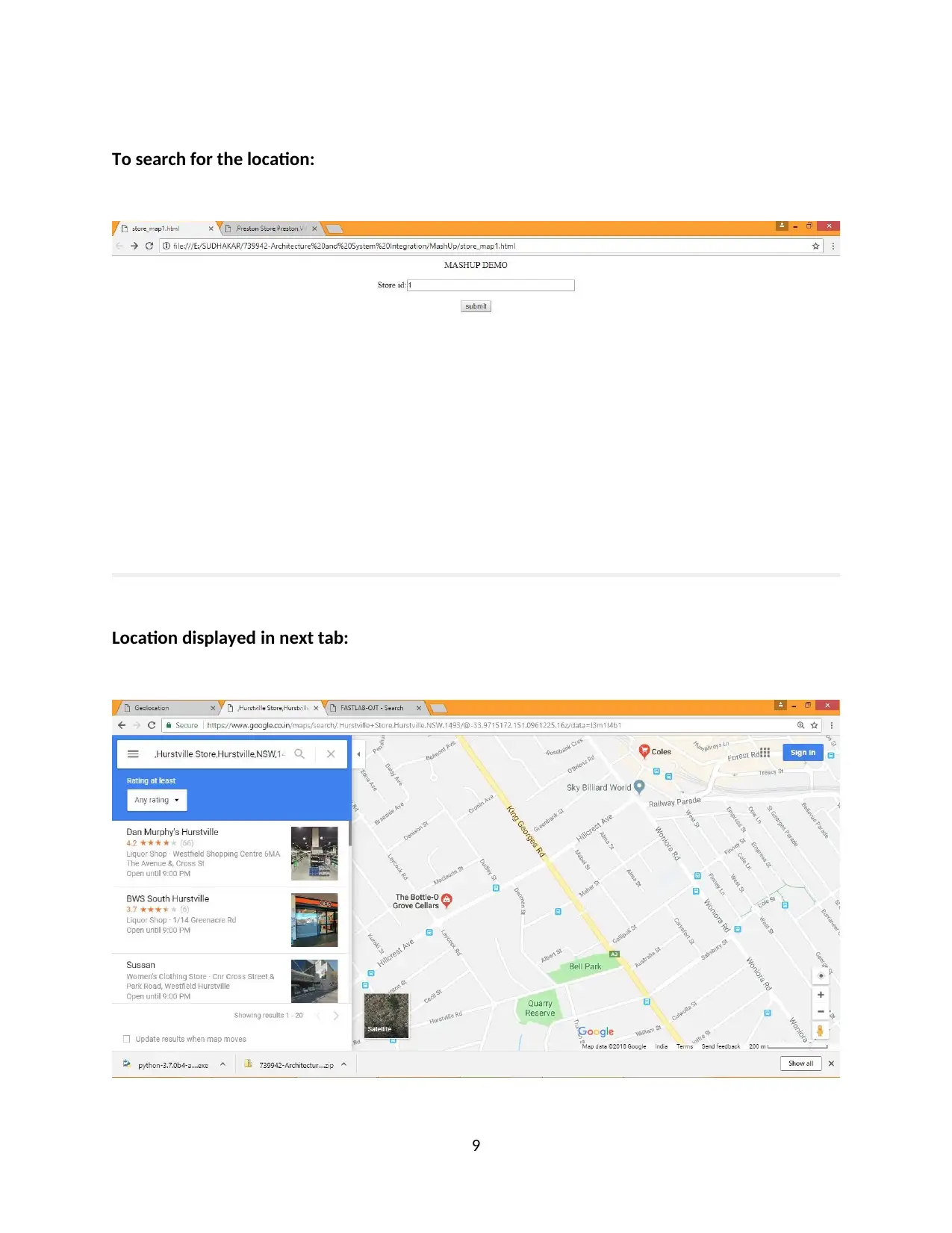
To search for the location:
Location displayed in next tab:
9
Location displayed in next tab:
9
Paraphrase This Document
Need a fresh take? Get an instant paraphrase of this document with our AI Paraphraser
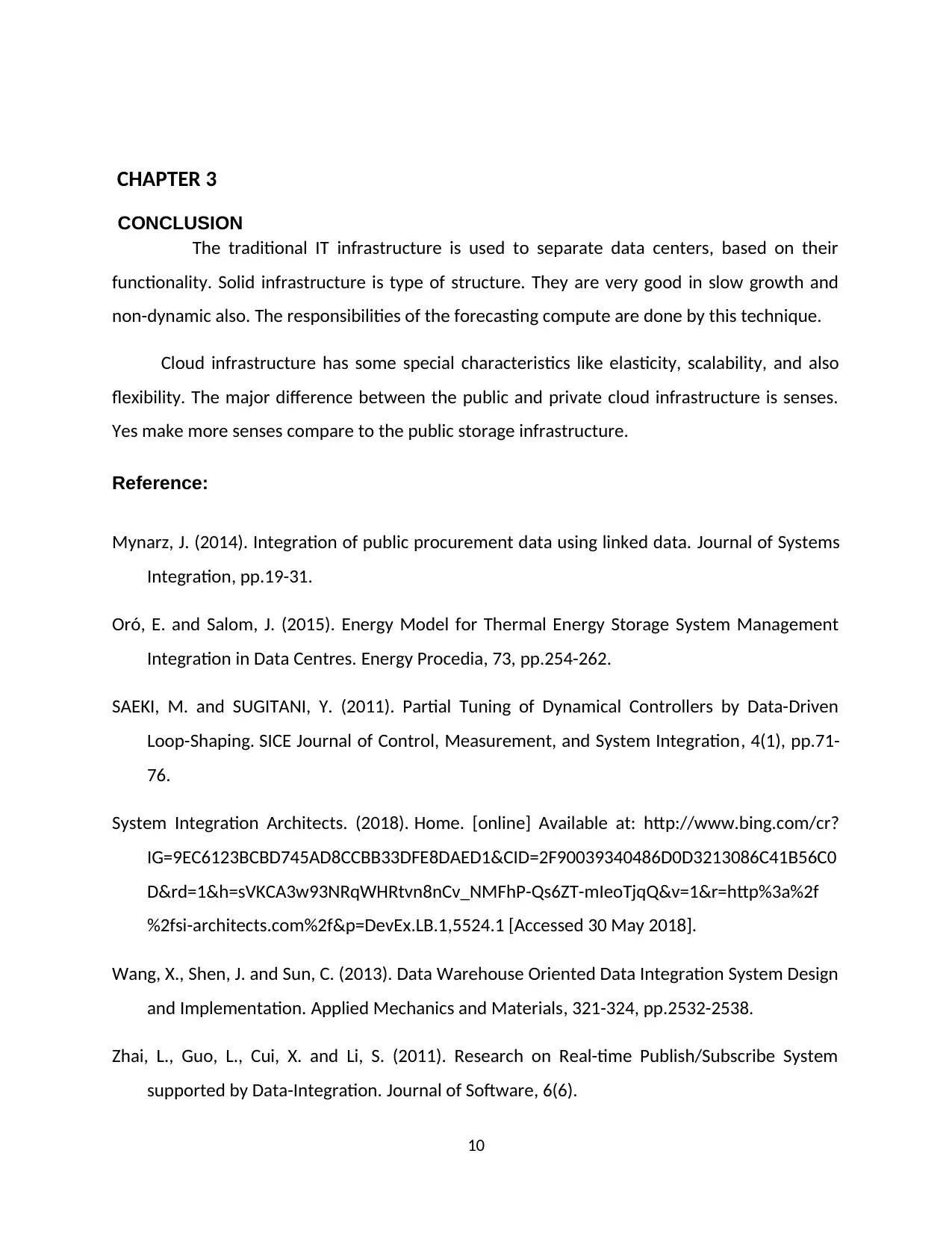
CHAPTER 3
CONCLUSION
The traditional IT infrastructure is used to separate data centers, based on their
functionality. Solid infrastructure is type of structure. They are very good in slow growth and
non-dynamic also. The responsibilities of the forecasting compute are done by this technique.
Cloud infrastructure has some special characteristics like elasticity, scalability, and also
flexibility. The major difference between the public and private cloud infrastructure is senses.
Yes make more senses compare to the public storage infrastructure.
Reference:
Mynarz, J. (2014). Integration of public procurement data using linked data. Journal of Systems
Integration, pp.19-31.
Oró, E. and Salom, J. (2015). Energy Model for Thermal Energy Storage System Management
Integration in Data Centres. Energy Procedia, 73, pp.254-262.
SAEKI, M. and SUGITANI, Y. (2011). Partial Tuning of Dynamical Controllers by Data-Driven
Loop-Shaping. SICE Journal of Control, Measurement, and System Integration, 4(1), pp.71-
76.
System Integration Architects. (2018). Home. [online] Available at: http://www.bing.com/cr?
IG=9EC6123BCBD745AD8CCBB33DFE8DAED1&CID=2F90039340486D0D3213086C41B56C0
D&rd=1&h=sVKCA3w93NRqWHRtvn8nCv_NMFhP-Qs6ZT-mIeoTjqQ&v=1&r=http%3a%2f
%2fsi-architects.com%2f&p=DevEx.LB.1,5524.1 [Accessed 30 May 2018].
Wang, X., Shen, J. and Sun, C. (2013). Data Warehouse Oriented Data Integration System Design
and Implementation. Applied Mechanics and Materials, 321-324, pp.2532-2538.
Zhai, L., Guo, L., Cui, X. and Li, S. (2011). Research on Real-time Publish/Subscribe System
supported by Data-Integration. Journal of Software, 6(6).
10
CONCLUSION
The traditional IT infrastructure is used to separate data centers, based on their
functionality. Solid infrastructure is type of structure. They are very good in slow growth and
non-dynamic also. The responsibilities of the forecasting compute are done by this technique.
Cloud infrastructure has some special characteristics like elasticity, scalability, and also
flexibility. The major difference between the public and private cloud infrastructure is senses.
Yes make more senses compare to the public storage infrastructure.
Reference:
Mynarz, J. (2014). Integration of public procurement data using linked data. Journal of Systems
Integration, pp.19-31.
Oró, E. and Salom, J. (2015). Energy Model for Thermal Energy Storage System Management
Integration in Data Centres. Energy Procedia, 73, pp.254-262.
SAEKI, M. and SUGITANI, Y. (2011). Partial Tuning of Dynamical Controllers by Data-Driven
Loop-Shaping. SICE Journal of Control, Measurement, and System Integration, 4(1), pp.71-
76.
System Integration Architects. (2018). Home. [online] Available at: http://www.bing.com/cr?
IG=9EC6123BCBD745AD8CCBB33DFE8DAED1&CID=2F90039340486D0D3213086C41B56C0
D&rd=1&h=sVKCA3w93NRqWHRtvn8nCv_NMFhP-Qs6ZT-mIeoTjqQ&v=1&r=http%3a%2f
%2fsi-architects.com%2f&p=DevEx.LB.1,5524.1 [Accessed 30 May 2018].
Wang, X., Shen, J. and Sun, C. (2013). Data Warehouse Oriented Data Integration System Design
and Implementation. Applied Mechanics and Materials, 321-324, pp.2532-2538.
Zhai, L., Guo, L., Cui, X. and Li, S. (2011). Research on Real-time Publish/Subscribe System
supported by Data-Integration. Journal of Software, 6(6).
10
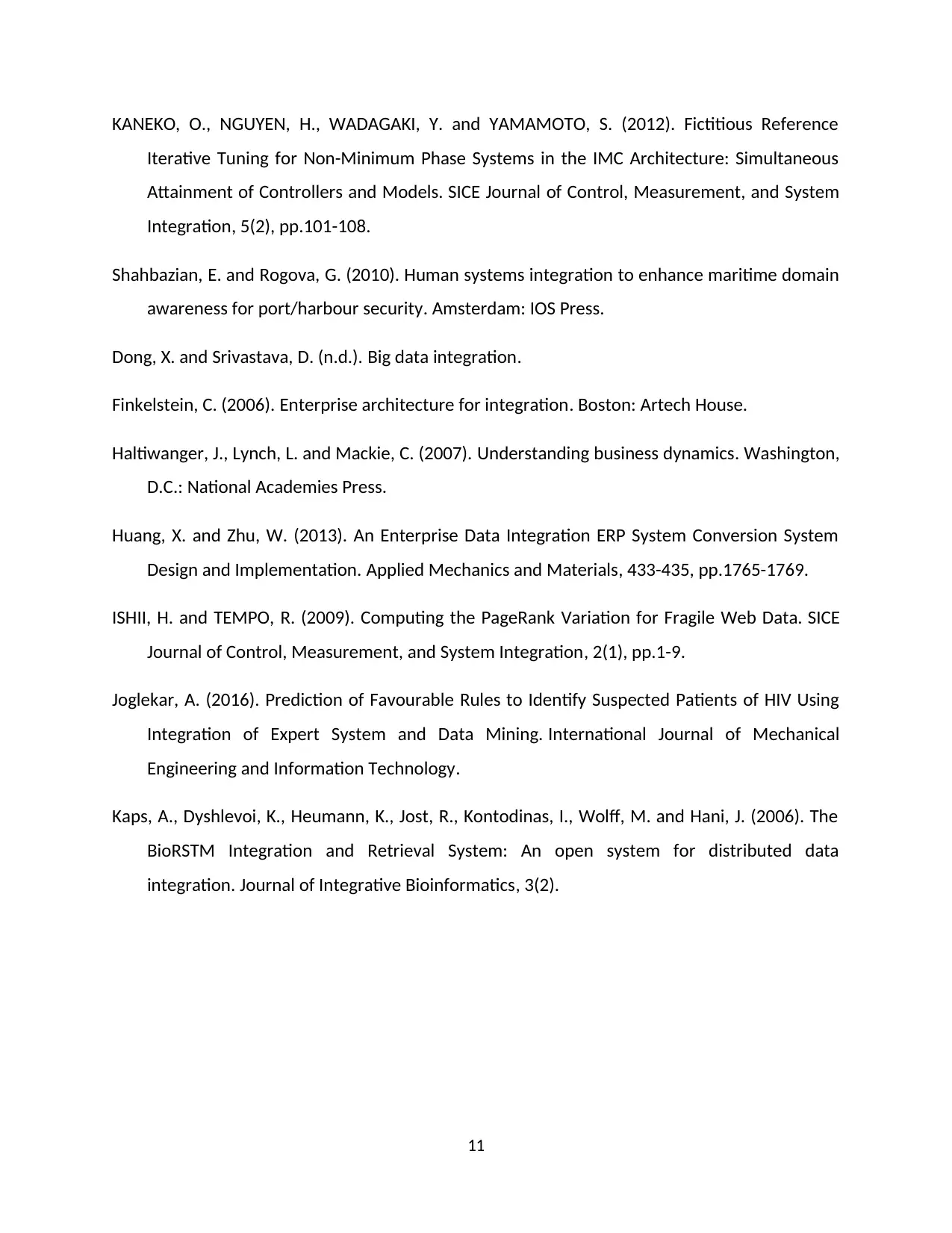
KANEKO, O., NGUYEN, H., WADAGAKI, Y. and YAMAMOTO, S. (2012). Fictitious Reference
Iterative Tuning for Non-Minimum Phase Systems in the IMC Architecture: Simultaneous
Attainment of Controllers and Models. SICE Journal of Control, Measurement, and System
Integration, 5(2), pp.101-108.
Shahbazian, E. and Rogova, G. (2010). Human systems integration to enhance maritime domain
awareness for port/harbour security. Amsterdam: IOS Press.
Dong, X. and Srivastava, D. (n.d.). Big data integration.
Finkelstein, C. (2006). Enterprise architecture for integration. Boston: Artech House.
Haltiwanger, J., Lynch, L. and Mackie, C. (2007). Understanding business dynamics. Washington,
D.C.: National Academies Press.
Huang, X. and Zhu, W. (2013). An Enterprise Data Integration ERP System Conversion System
Design and Implementation. Applied Mechanics and Materials, 433-435, pp.1765-1769.
ISHII, H. and TEMPO, R. (2009). Computing the PageRank Variation for Fragile Web Data. SICE
Journal of Control, Measurement, and System Integration, 2(1), pp.1-9.
Joglekar, A. (2016). Prediction of Favourable Rules to Identify Suspected Patients of HIV Using
Integration of Expert System and Data Mining. International Journal of Mechanical
Engineering and Information Technology.
Kaps, A., Dyshlevoi, K., Heumann, K., Jost, R., Kontodinas, I., Wolff, M. and Hani, J. (2006). The
BioRSTM Integration and Retrieval System: An open system for distributed data
integration. Journal of Integrative Bioinformatics, 3(2).
11
Iterative Tuning for Non-Minimum Phase Systems in the IMC Architecture: Simultaneous
Attainment of Controllers and Models. SICE Journal of Control, Measurement, and System
Integration, 5(2), pp.101-108.
Shahbazian, E. and Rogova, G. (2010). Human systems integration to enhance maritime domain
awareness for port/harbour security. Amsterdam: IOS Press.
Dong, X. and Srivastava, D. (n.d.). Big data integration.
Finkelstein, C. (2006). Enterprise architecture for integration. Boston: Artech House.
Haltiwanger, J., Lynch, L. and Mackie, C. (2007). Understanding business dynamics. Washington,
D.C.: National Academies Press.
Huang, X. and Zhu, W. (2013). An Enterprise Data Integration ERP System Conversion System
Design and Implementation. Applied Mechanics and Materials, 433-435, pp.1765-1769.
ISHII, H. and TEMPO, R. (2009). Computing the PageRank Variation for Fragile Web Data. SICE
Journal of Control, Measurement, and System Integration, 2(1), pp.1-9.
Joglekar, A. (2016). Prediction of Favourable Rules to Identify Suspected Patients of HIV Using
Integration of Expert System and Data Mining. International Journal of Mechanical
Engineering and Information Technology.
Kaps, A., Dyshlevoi, K., Heumann, K., Jost, R., Kontodinas, I., Wolff, M. and Hani, J. (2006). The
BioRSTM Integration and Retrieval System: An open system for distributed data
integration. Journal of Integrative Bioinformatics, 3(2).
11
⊘ This is a preview!⊘
Do you want full access?
Subscribe today to unlock all pages.

Trusted by 1+ million students worldwide
1 out of 13
Related Documents
Your All-in-One AI-Powered Toolkit for Academic Success.
+13062052269
info@desklib.com
Available 24*7 on WhatsApp / Email
![[object Object]](/_next/static/media/star-bottom.7253800d.svg)
Unlock your academic potential
Copyright © 2020–2025 A2Z Services. All Rights Reserved. Developed and managed by ZUCOL.





